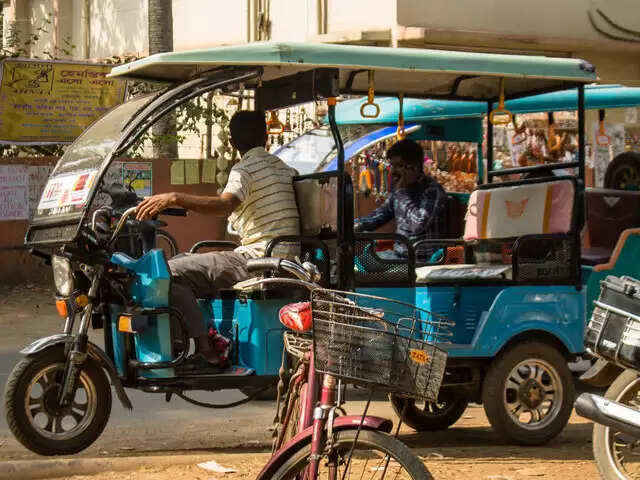Read by: 100 Industry Professionals

New Delhi: Improper parking, plying on prohibited roads or without insurance, and letting passengers sit next to the driver were some of the major violations by e-rickshaws in the city, according to Delhi Traffic Police data from January 1 till May 15.
The maximum violations were reported from Najafgarh circle, followed by Tilak Nagar, Dabri, Mayapuri, Kotwali, Shahdara, Sultanpuri, Rajouri Garden, Nangloi and Punjabi Bagh.
A total of 25,743 e-rickshaws were prosecuted for improper parking compared to 16,577 in the same period last year, a 55% rise. Plying on prohibited roads saw a slight decline of 4%, i.e., from 14,691 to 14,045. Other offences that saw a rise included driving without insurance/registration and letting passengers travel on the driver’s seat. A total of 177 e-rickshaws were impounded this year, compared to 107 last year during this period.
While e-rickshaws were introduced to ensure last-mile connectivity, their increasing numbers, from markets to Metro stations, have turned them into a nuisance, leading to massive congestion on Delhi’s roads. Delhi Traffic Police officials said they had sent a proposal to the transport department regarding restraint in the registration of e-rickshaws by formulating a comprehensive policy to control and regulate the numbers.
In CR Park, e-rickshaws parked on the side of the road occupy an entire lane, not only affecting the traffic movement, but also risking the lives of other commuters. Similarly, at Rajghat, which is a banned corridor, several e-rickshaws can be seen carrying goods that are often bigger than the vehicle, which can be dangerous for commuters. E-rickshaws seem to be missing, however, from upscale markets, which usually see shoppers using their own cars.
Traffic officials said the operations of e-rickshaws were noticed in 2011 after the conclusion of the Commonwealth Games. While the vehicles have been operational for over a decade and are a crucial mode of transport for last-mile connectivity, they also occupy road space and hinder or slow down traffic movement.
SS Yadav, special commissioner of police, traffic, said, “They ply mostly near bus stands and Metro stations and do not move until filled with passengers, causing congestion by blocking the road and creating havoc. The passengers are vulnerable as the design of e-rickshaws is faulty and their operation by non-licensed, untrained, underaged drivers makes them extremely dangerous.”
E-rickshaw drivers often jump signals and violate crucial traffic laws, endangering the lives of commuters, Yadav added.
“It is pertinent to note that their batteries are also illegally charged overnight, which is another important safety issue and must be looked into,” he said.
According to experts, e-rickshaws are a boon but their rapidly growing numbers are also a cause for concern. Sewa Ram, professor of transport planning, School of Planning and Architecture, said the role of e-rickshaws was to provide last- and first-mile connectivity and, therefore, they may be suitable on feeder networks.
“If they ply on the main networks, they will cause congestion and lead to unsafe conditions as well. In certain cases, they come to the main corridor to provide direct access to a Metro station or bus stop. It is advisable to define their area. It is equally important to augment public transport, as they complement it in some cases. The other unfortunate part is that they do not meet the standard requirements of safety,” said Ram.

